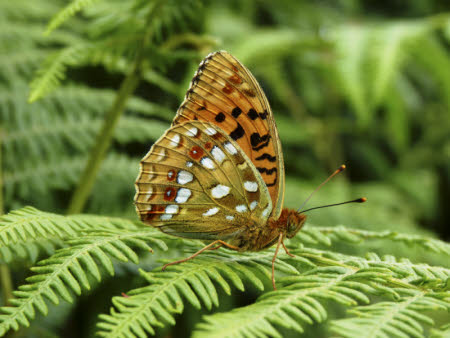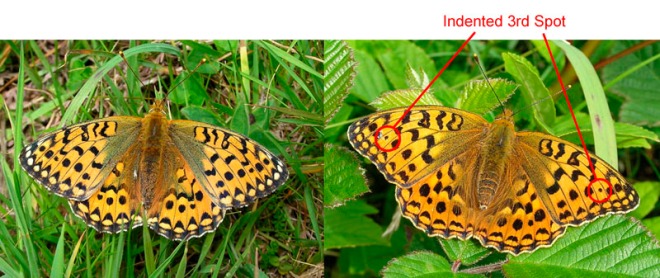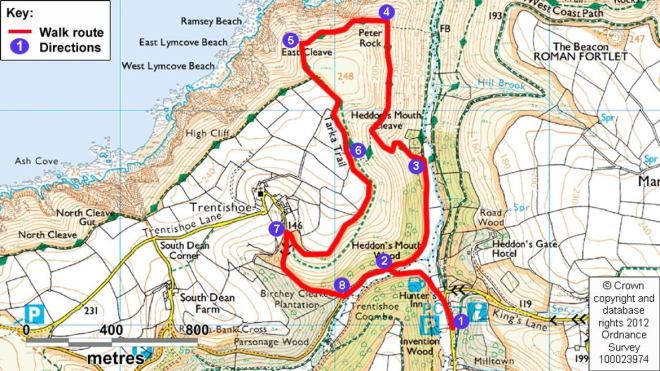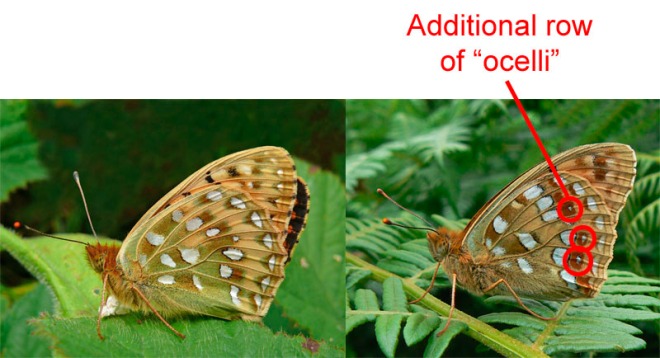What follows is an important item on my insect agenda for this season. High Brown Fritillary has been described as possibly the rarest and most difficult to see British butterfly, and prior to the rather arduous excursion described herein was one of only four species I had not observed nationally. Precise instructions on locating them at these two sites were given to me by colleagues on April’s False Apollo tour in Greece.
Since before I began to compile this journal only what I have regarded as the “northern cluster” of HBF, Mountain Ringlet, Scotch and Northern Brown Argus – plus Chequered Skipper that until this year occurred only in the Scottish Highlands – have been needed for the British set. The first four are all resident in the north of Lancashire and Cumbria, and the issue with them is that people often travel all that way then if the weather isn’t right see precisely nothing.
For year after year in the present decade their July and August flight periods coincided with wet weather until 2018’s July heatwave. So I finally made the required long distance trek, staying up there in company with Ewan for two nights. But we recorded only some rather worn NBA and though Arnside Knot has always been cited as the classic site for HBF we drew blank. Earlier this year I was told by someone who spends time in Cumbria that the butterfly has gone into decline there. A former fragment colony in the Malvern Hills, Worcs is also now extinct, and so I switched attention to the south-western population.

High Brown Fritillary © National Trust Images
This above is what I was seeking. The picture is a scan of a postcard I purchased from the Heddon Valley National Trust shop. It was taken by the lepidopterist and author Matthew Oates, and were it not for his credentials I might suspect this High Brown Fritillary of being a dried museum exhibit placed in a perfect pose. That cynicism arises from my experience in these last two days, as well as at Arnside Knot a year ago, which suggests the likelihood of seeing the butterfly so well is slight.
I arrived on site at Aish Tor (SX 70534 71126) near Ashburton on Dartmoor at 9:30am. The driving distance of 176 miles had been beyond my preferred range and my normal reluctance to travel long distances to seek particular butterflies was now endorsed as conditions looked ominously cloudy. But my directions had been spot on and walking up and into a bracken slope (pictured below) from GPS N50°31.503′ W3°49.643′ I at once began to put up Fritillaries. But were they High Brown or Dark Green? Differences between the two on the top side are only slight, so proving High Brown in the field requires records of the more markedly distinct under-wing, such as the one above.

High Brown Fritillary habitat at Aish Tor
Therein lies the difficulty. Bracken is a very dense habitat that is tricky for people to move around but easy for butterflies to conceal themselves in. It holds the food plant, Dog Violet and provides the warmth larvae require. Over the next three hours I kept seeing Fritillaries flying fast from place to place above the vegetation but rarely settling in view. The best strategy suggested itself as staking out bramble patches where they might come to nectar on the flowers. I moved endlessly between two such spots without gaining any acceptable pictures.

Dark Green (left) and High Brown Fritillaries, courtesy of Butterfly Conservation

Of the specimens I managed record shots of here this one (above) suggested itself as the best candidate for High Brown. The crucial out of alignment upf wing dot in the BC illustration varies between pictures I have seen over the last year, both in size and exact position, and that I find especially frustrating. The lower edge of the fore-wing does appear to be slightly concave, another diagnostic, but I cannot be sure of this ID. There were fresh and worn butterflies on the wing here of which I took the former to be High Brown and the latter Dark Green.
After a lunch break I phoned my contact Dave Potter who had given me the site directions, just to talk things through and so fight the demoralisation that was setting in. He suggested that even in the lightly overcast conditions which still persisted the Fritillaries would have to refuel by nectaring during the afternoon. But things just became greyer still and so at around 1:30pm I moved on to the second site, a drive of around another 80 miles. There the once trusted BBC weather app that got things wrong through most of this outing forecast a little more sunlight.

NT Heddon Estate butterfly walk in the Exmoor National Park
Between points 8 and 7 on this map are a line of telegraph poles along the right hand edge of a steep uphill lane. My instructions were that High Brown Fritillary is always to be found on a yet steeper bracken valley side above pole 6A. When I got there Fritillaries were indeed on the wing, amongst which were some fresh and boldly marked individuals that had to be my quest, all behaving in just the same way as at Aish Tor. But this habitat was so steep and dense as to be dangerous without a walking stick for support. After almost an hour of floundering around I went to retrieve my hiking pole, that made things many times easier, but by then any sunshine was over for what had been a very long and tiring day.

The Exmoor conservation area town of Lynton
I stayed overnight in the picturesque coastal town of Lynton, at the excellent St Vincent guest house (see here). Then in the morning I returned to the Heddon Valley (SS655481) to resume my quest. The National Trust publishes an informative leaflet on locating HBF here that tells how despite a 96% decline since 1976 in this butterfly’s English distribution, numbers have increased six-fold at this site over the past 17 years due to the charity and BC’s joint habitat management work (see here).
This revival has gained national press coverage as a conservation success story in recent years. HBF nonetheless remains one of only two “critically endangered” red listing status UK butterfly species, since all the population gains this century have been in moorland edge and bracken hillside habitats on both Exmoor and Dartmoor. In times past this butterfly inhabited coppiced woodlands across southern England and Wales, but like other Fritillaries went into catastrophic decline due to habitat loss as management practices changed.
Heddon Valley visitors are encouraged to locate them along the trail in the map higher up this post, but the guide addresses its audience in a rather generalised way. I had been here once before without knowing exactly where to look for HBF, in the early years of this decade after finding my first ever Heath Fritillaries on another part of Exmoor near Dunkery Beacon. On that occasion I walked out to Heddon’s Mouth and back without finding any.
The NT leaflet stresses that spotting them can be tricky in the bracken covered valley sides here but I can only say observation is very difficult. It is just not possible to move around in the habitat and so I sat above a biggish patch of bramble blooms and waited mostly in vain for Fritillaries to settle. For much of the time they seemed to be somewhere else, creating the temptation to wander with the inevitable outcome of still not getting decent pictures.

Dark Green (left) and High Brown Fritillary under-wing diagnostics, courtesy of Butterfly Conservation
Early in my sojourn first one then another individual did settle nearby, though slightly into the sun. On the back of my camera these back-lit record shots (above and below) appeared to show enough rust red under-wing markings to be High Brown. But I could not see the white centres to the additional row of “ocelli” in the BC illustration, and that bothered me. But once the images were loaded on my computer at home that key diagnostic was just discernible, especially in the blown up right hand picture (above, bottom row – click to enlarge). That clinched the ID and so, albeit without pictures of the standard I seek, mission had at length been accomplished.
The small, out of alignment wing dot is also clear in the right hand top side study above. For a while I was joined by another enthusiast who I had spoken to the previous evening. When he left to rejoin his wife I asked to see his pictures taken further down the slope. They were again back-lit and showed enough rust red markings to be HBF. So as per my own briefing, behind telegraph pole 6A is indeed the place to find Great Britain’s scarcest butterfly.
I remained here for the rest of the morning without any better picture opportunities arising. By that time I was feeling hotter, as bothered and more bored than at Aish Tor the day before. To revive my flagging spirits I followed the upper part of the trail above the slope I had been searching and out towards Heddon’s Mouth. There were a few more Fritillaries at that scenic elevation but none I could PI as High Brown. Then unable to summon the persistence to continue I embarked upon the five hour journey home.
Butterflying is meant to be uplifting and part of the motivation lies in enjoying the locations into which the pastime takes me. Though the Heddon estate is a beautiful place there was little to find attractive in this particular hill side. The outing had been a chore at both sites, possibly the most frustrating and least enjoyable piece of butterflying I have ever done. But the bottom line is there are now just three species I still need for the British set: Scotch Argus, Mountain Ringlet and Chequered Skipper.
Footnote: I found good numbers of High Brown Fritillary 10 days later nectaring on Thistles near the summit of Montagne de Lure in the south of France. The top side picture (above left) shows all three diagnostic features clearly: the indented third upf wing spot, the slightly concave outer edge to that wing and ridged black veins nearer to its inside edge. The under-side study is of a rather faded individual, but what a relief it was to gain acceptable images so soon after the frustration of my experience in Devon.







Interesting read, after a very frustrating experience at Whitbarrow Scar today, in which numerous Dark Greens and a Small Pearl Bordered were seen I had no joy at all at sighting a High Brown and neither did an independent visitor who clearly knew what he was talking about.
Tried Gait Barrows after lunch, saw nothing but someone showed be an inconclusive photo which may have been a High Brown.
I’m both interested and concerned to read that the High Brown has declined in the North West.
LikeLike